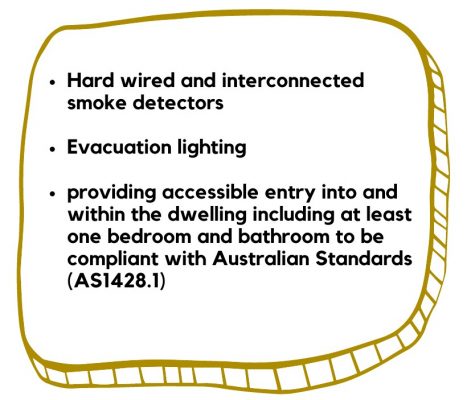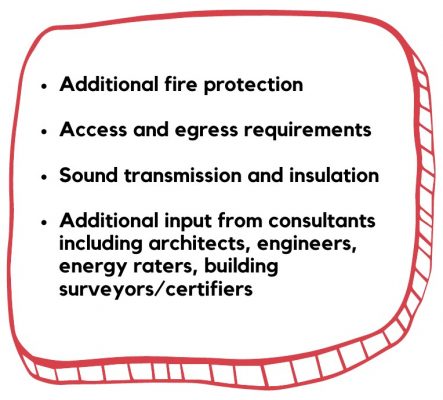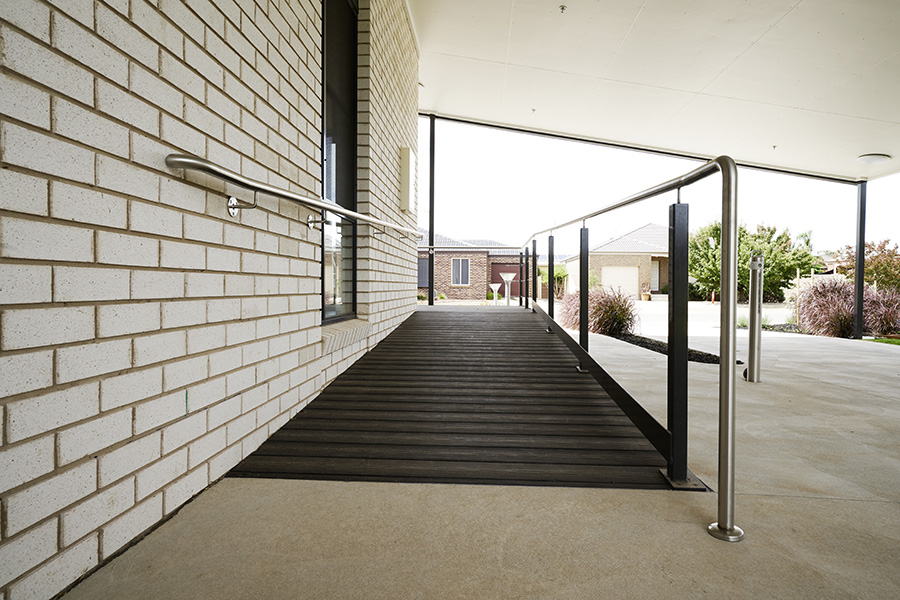What is the correct building classification?
Claire Oliver recently presented to a group of community housing provider CEOs on the topic of Building Classifications for housing for People with Disabilities. Architecture & Access have been involved with SDA (Specialist Disability Accommodation) since the inception of the NDIS, and a reoccurring issue arises with each new project – what is the correct building classification? Correct classification is important to ensure new developments are appropriate and safe for residents and their care team.
The building classification is determined in the Building Code of Australia which is part of the National Construction Code (NCC), and in regard to SDA and community-based housing classification could be:

The NCC is a nationwide code, however, as it is legislated by the states and territories there may be variations to definitions and requirements. In Victoria for example, the NCC defines a residential care building SDA as a Class 3 building. In addition to this, the Victorian governments’established guidelines around fire safety measures in government owned community-based house must be Class 3. In other states, some advice received from local building surveyors/certifiers is that this same type of housing stock would be considered Class 1 (b).
Class 1 are typical domestic style residential houses, whereas Class 2 and 3 are commercial style buildings.
So, what are the implications of these classifications?
This will depend on the state/territory the property is in and can also vary depending on the building surveyor/certifier, but could be expected to include:
For Class 1b:

For Class 2/3:

Additional considerations:
When you have an existing property requiring upgrade works, if the building is not already Class 3, it may be subjected to a change of use, meaning a building surveyor/certifier will need to assess the performance of the existing building against today’s current standards and requirements. This can have significant implications for additional upgrade works to satisfy the change in use, such as improvements to energy efficiency, fire rating of building elements and materials, sound transmission, and insulation etc.
It is important to remember that the classification is determined by the relevant building surveyor/certifier, so it is important for upgrades to an existing property or a brand new development, that appropriate specialist building practitioners are brought into any projects as early as possible, to ensure the appropriate building classification is determined, so this can be appropriately addressed from the beginning of the project.
